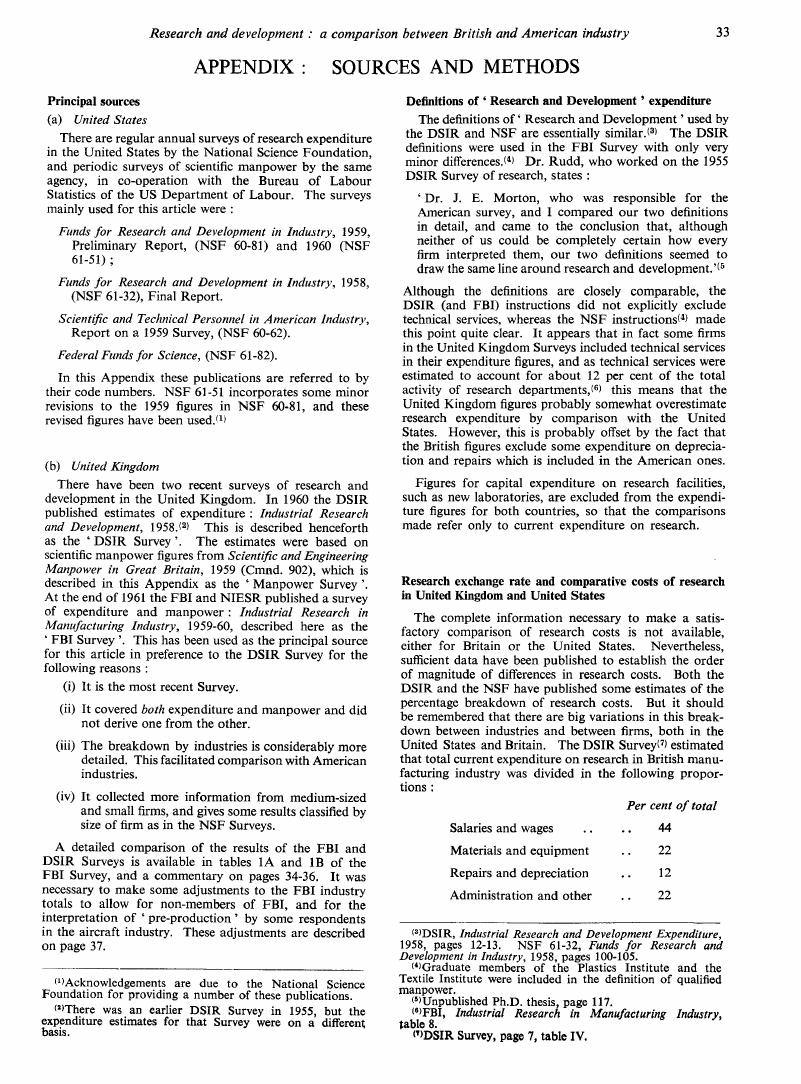No CrossRef data available.
Article contents
Appendix: Sources and Methods
Published online by Cambridge University Press: 26 March 2020
Abstract

- Type
- Articles
- Information
- Copyright
- Copyright © 1962 National Institute of Economic and Social Research
References
Note (1) page 33 Acknowledgements are due to the National Science Foundation for providing a number of these publications.
(2) There was an earlier DSIR Survey in 1955, but the expenditure estimates for that Survey were on a different basis.
(3) DSIR, Industrial Research and Development Expenditure, 1958, pages 12-13. NSF 61-32, Funds for Research and Development in Industry, 1958, pages 100-105.
(4) Graduate members of the Plastics Institute and the Textile Institute were included in the definition of qualified manpower.
(5) Unpublished Ph.D. thesis, page 117.
(6) FBI, Industrial Research in Manufacturing Industry, table 8.
(7) DSIR Survey, page 7, table IV.
Note (1) page 34 NSF 61-32, table A-31.
(2) This may be estimated by comparing payroll cost per employee in manufacturing industry in the United States and Britain from Census of Production data for 1958. This gives an exchange rate of $8.5.
(3) Scientific Manpower Bulletin, NSF 60-78. Income includes earnings such as consultancy fees, which are additional to basic salary.
(4) Professional Engineer, vol. 6, no. 9, January 1961.
(5) See the following section for discussion of the definition of qualified manpower and ‘HNC personnel’.
(6) As a rough check on the order of magnitude it is clear that the research exchange rate must be higher than, say, $5 and below about $8 to £1. An exchange rate of $8 to £1 would be highly unlikely because this is very little below the average manufacturing wage exchange rate; because of higher United States productivity the goods and services input into research (which accounts for about half the total) is certainly far more favourable to the United States than the relative wage levels. At the other extreme an exchange rate of $5 to £1 would imply a salary exchange rate of $6 or less; this is incompatible with our information on numbers of research workers and the distribution of expenditures, except on the highly improbable assumption that the United States employs a very much higher ratio of support staff per qualified worker.
(7) Holders of HNC or HND without further qualification.
(8) See Payne, Britain's Scientific and Technological Man power, pages 35 and 205-209.
(9) In estimating the sub-totals for ‘electronics’ and ‘other electrical’ from the FBI Survey total for ‘electrical engineering’, the same principle was applied, in accordance with the information on page 66 of that Survey.
Note (1) page 37 FBI Survey, pages 33-36.
(2) FBI Survey, page 35.
(3) FBI Survey, page 56.




